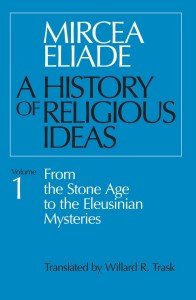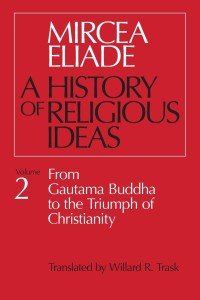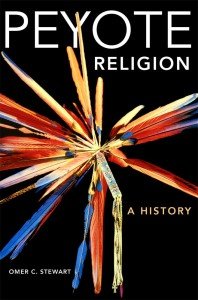A Review of India: A History
An Expansive Chronicle of the Subcontinent
John Keay's revised and updated edition of India: A History, published by Grove Press in 2011, offers readers a meticulously detailed and comprehensive exploration of the Indian subcontinent's complex and multifaceted history. With his deft storytelling and authoritative grasp of historical nuance, Keay presents a vibrant tapestry of India's past, spanning millennia and countless cultural, political, and social transformations. This edition of the book is particularly notable for its updated content, reflecting new research and insights that further enrich its narrative.
An Epic Scale: The Scope and Structure
India: A History is a monumental undertaking, covering the entirety of Indian history from the earliest traces of human settlement to the modern era. Keay systematically delves into each epoch, weaving intricate details without sacrificing the overarching narrative. The book is divided into sections that mirror major historical periods, including the Indus Valley Civilization, the Vedic Age, the Mauryan Empire, the Mughal rule, and British colonialism, culminating in India's emergence as an independent nation.
This revised edition, published in 2011, includes updates that reflect the latest archaeological findings and scholarly debates. It extends its coverage to include contemporary issues, such as India's rapid globalization, its political evolution in the post-independence era, and the enduring complexities of its pluralistic society. Keay's ability to encompass such breadth while maintaining clarity and coherence is a testament to his mastery as a historian.
Thematic Depth: Religion, Culture, and Power
Keay's narrative is as much about cultural and intellectual history as it is about political and military events. The book explores the profound influence of religion and philosophy, from the spiritual tenets of Hinduism, Buddhism, and Jainism to the arrival and impact of Islam and Christianity. Keay examines how these beliefs shaped the social fabric of India, creating a unique mosaic of traditions and practices.
The book also delves into the dynamics of power, exploring the rise and fall of empires, the interplay of indigenous rulers and foreign invaders, and the intricate strategies that defined governance in India. From Ashoka's embrace of Buddhism to Akbar's attempts at fostering religious tolerance, Keay illuminates the personalities and ideologies that have shaped India's historical trajectory.
A Blend of Scholarship and Accessibility
One of the standout features of India: A History is Keay's ability to balance rigorous scholarship with accessible prose. The book is meticulously researched, drawing upon an extensive array of sources, including archaeological records, ancient texts, and modern academic studies. Yet, Keay's writing remains engaging and approachable, making this tome as suitable for casual readers as it is for scholars.
Keay's storytelling is enriched by vivid imagery and thoughtful analysis, bringing historical figures and events to life. He avoids the pitfalls of dry academic writing, instead infusing the book with a sense of wonder and curiosity about India's vast and varied history.
Strengths of the Revised Edition
The 2011 edition of India: A History is particularly noteworthy for its revisions and updates. Keay incorporates recent discoveries that shed new light on India's ancient past, such as advancements in understanding the Indus Valley Civilization and the role of maritime trade. The updated content also addresses contemporary challenges, including the socio-political implications of India's economic rise and the tensions stemming from its diverse populace.
Keay's additions reflect his commitment to presenting Indian history as a dynamic and continuously evolving narrative. By linking the past to the present, he provides readers with a nuanced perspective on how historical developments continue to shape contemporary India.
Critiques and Considerations
While India: A History is undoubtedly an impressive achievement, it is not without its critics. Some readers may find the book's sheer breadth overwhelming, as Keay endeavors to include every significant detail and event. This exhaustive approach, though commendable, can occasionally lead to information overload.
Additionally, Keay's focus on thematic and chronological continuity may sometimes obscure regional nuances. The diversity of India's history—manifested in its numerous languages, cultures, and local histories—can be difficult to capture fully in a single volume. Some critics argue that a more localized approach might have provided additional insights.
A Valuable Contribution to Historical Literature
Despite these minor critiques, India: A History remains an invaluable resource for anyone seeking to understand the rich tapestry of Indian history. Keay's dedication to presenting a balanced and well-rounded narrative ensures that readers emerge with a profound appreciation for the complexity and beauty of India's past.
The book's updated content is particularly significant, as it highlights the importance of ongoing research and the evolving nature of historical understanding. Keay's ability to incorporate new findings and adapt his narrative accordingly underscores his role as a thoughtful and dynamic historian.
Conclusion: A Masterpiece of Historical Storytelling
In his revised and updated edition of India: A History, John Keay delivers a masterful chronicle of one of the world's most fascinating and influential regions. With its expansive scope, thematic richness, and updated insights, the book serves as both a comprehensive reference and a compelling narrative. Whether you're a scholar, a student, or simply a curious reader, this edition of India: A History is sure to leave you with a deeper understanding and appreciation for the subcontinent's remarkable journey through time.
As a blend of history, culture, and thought-provoking analysis, Keay's work stands as a testament to the enduring significance of India's legacy. The 2011 edition ensures that this legacy is presented with both historical accuracy and contemporary relevance, making it a must-read for anyone eager to explore the multifaceted story of India.






